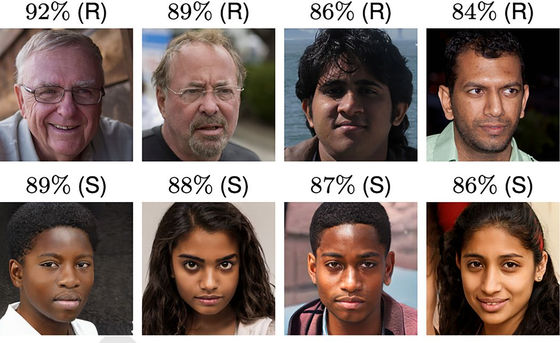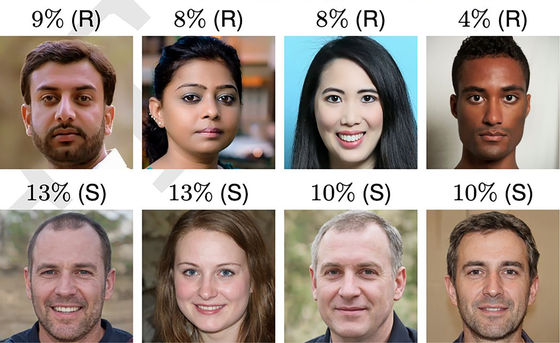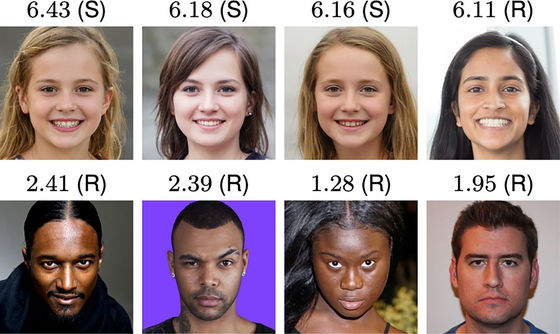AI-generated faces are indistinguishable from real faces and are more reliable than real faces

When you make something that resembles a human, it has the effect of increasing the likability up to a certain degree of reproducibility, but if it resembles more than a certain level, the disgust will increase at once. This is due to the work of the brain called the '
However, according to the latest research, artificial intelligence (AI) can break through the 'uncanny valley' and rather generate faces that make you feel that 'the face generated by AI is more reliable'. am.
AI-synthesized faces are indistinguishable from real faces and more trustworthy | PNAS
https://doi.org/10.1073/pnas.2120481119
Humans Find AI-Generated Faces More Trustworthy Than the Real Thing --Scientific American
https://www.scientificamerican.com/article/humans-find-ai-generated-faces-more-trustworthy-than-the-real-thing/
The so-called 'deepfake', which uses AI to synthesize audio, images, and videos, used to be a Hollywood movie-class special effects technology, but now it can be handled by anyone who wants to do it. increase.
For example, you can use the open source tool 'Avatarify' to impersonate others in real time with Zoom or Skype.
Open source deep fake tool 'Avatarify' that impersonates others in real time with Zoom and Skype --GIGAZINE
In addition, in the movie 'Reminiscence' released in 2021, as part of the promotion, we implemented a service that uploads a photo and makes the person appear in the movie trailer.

Some people got a job at Lucasfilm because they bought the goodness of making 'deepfake'.

Lancaster University psychologist Sophie Nightingale and University of California, Berkeley information scientist Hany Farid use
An example of a face that the identifyr was able to determine properly. The upper row is a real face photo, and the lower row is a composite face photo. In other words, the face in the lower row is not good because it turns out to be 'synthetic'.

An example of a face that the discriminator could not determine well. The upper row is a face photo that is judged to be genuine but synthetic, and the lower row is a facial photo that is judged to be genuine even though it is synthetic.

The first group of subjects only distinguishes between genuine and fake. The second group of subjects also distinguishes between genuine and fake, but before the test was conducted, a course on how to distinguish fake was given. The third subject group categorized the photos into seven levels, from 'very reliable' to 'very unreliable.'
As a result of the experiment of the first subject group, the judgment accuracy of genuine / fake was '48.2%'. The second group of subjects did not improve the numbers very much despite being taught how to distinguish them, and the judgment system was about 59%.
And, in the experiment of the third subject group, the reliability of the real face photo was 4.48 on average, but the reliability of the fake face photo was 4.82, and the result that the face photo generated by AI is more reliable. Came out.
A face photo with a high reliability score (upper) and a face photo with a low score (lower). The one with 'R' next to the score is a real face photo, and the one with 'S' is a composite face photo.

This result was unexpected for the research group. However, 'not all faces produced are indistinguishable from the real thing, and quite a few fake ones are quickly distinguishable,' said Nightingale.
Technology to automatically detect 'deep fake' has also been developed, but the accuracy and speed are insufficient as a countermeasure for the huge amount of content uploaded daily, and consumers are required to distinguish between genuine and fake. increase. However, this study reiterates that it is very difficult to spot a well-made deepfake.
Related Posts:
in Science, Posted by logc_nt






